

You’ll need the lowdown on lucky bamboo plant care if you’ve recently bought one of these structural plants for your home and you're feeling a bit confused on how to help it thrive.
And no wonder. Despite their common name, they’re not bamboo plants, plus, they’re sometimes sold without soil. There’s no need to feel daunted, though. Our plant experts confirm lucky bamboos are suitable for even the newest plant parents.
You just need to get a few factors right to ensure they stay leafy and green. From tips on problematic pests to whether misting is called for, you’ll find all the essentials for these brilliant indoor plants below.
The best lucky bamboo plant care, from the pros
These plants are popular in Feng Shui advice, and due to their compact size, are excellent houseplants for small spaces — perhaps on a desk or a bedside table.
1. Choose water or soil
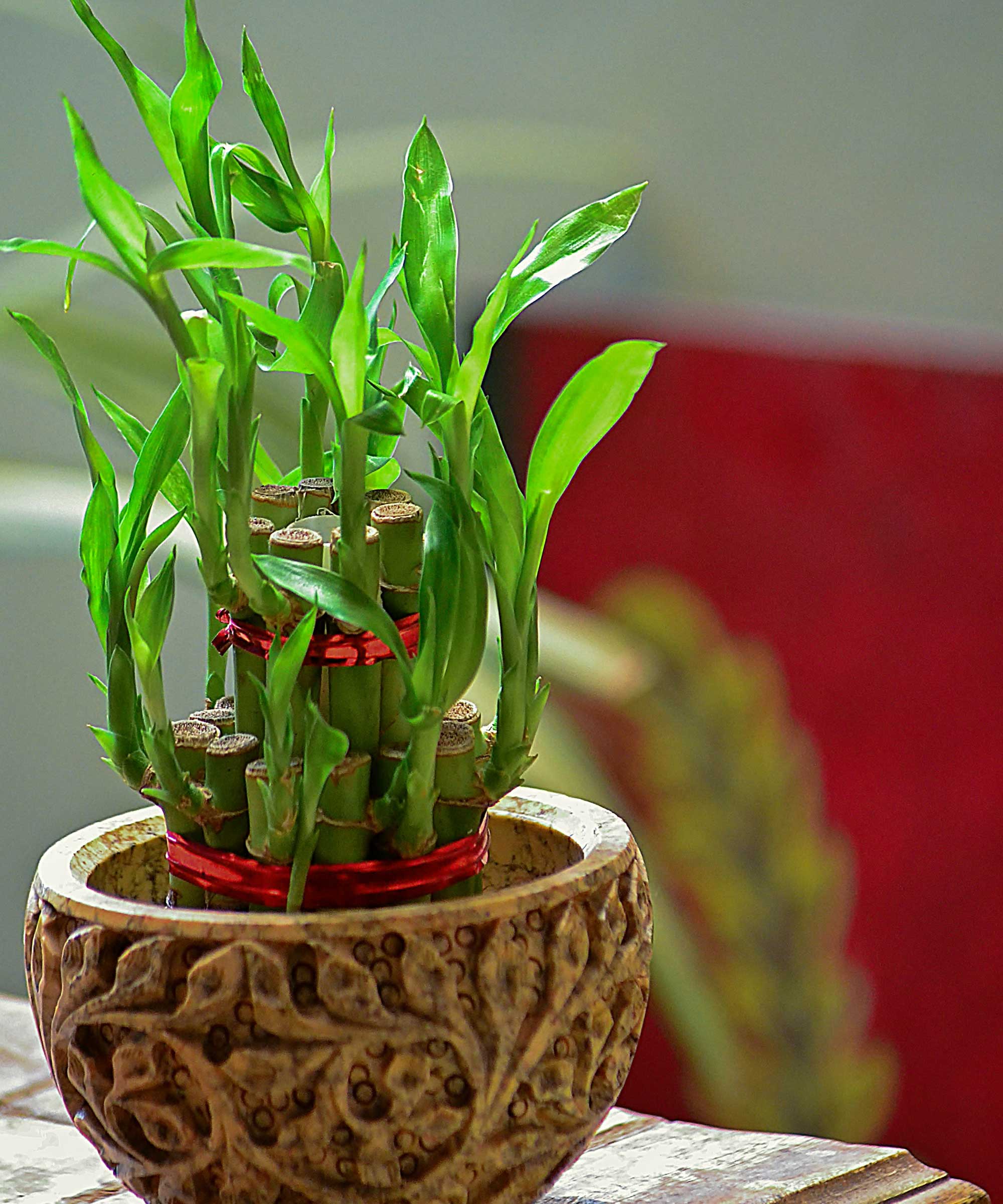
Autumn Hilliard-Knapp of Perfect Plants Nursery says, “Lucky bamboo can be grown in soil or water. For water-grown lucky bamboo, use a clear glass container and add pebbles or decorative stones to hold the plant upright. Ensure the water level covers the roots but does not submerge the entire stalk.”
This handcrafted glass vase from Wayfair is perfect for displaying shorter lucky bamboo stems in a contemporary interior scheme.
Kiersten Rankel from Greg, a plant-care app, recommends using filtered H2O for lucky bamboo watering, refreshing it completely every one to two weeks. "This will help prevent a build-up of algae," she says.

Autumn is a horticulture specialist and marketing professional at Perfect Plants Nursery. With four years of experience in the horticulture industry, she has developed a passion for helping people create beautiful indoor and outdoor spaces to enjoy. Her expertise in horticulture encompasses a broad range of activities, including plant care and selection, landscape design, and maintenance.

Kiersten Rankel is a certified Louisiana Master Naturalist and regularly volunteers with local community gardens and nonprofits to help restore critical ecosystems along the Gulf Coast. In her spare time, she enjoys tending to her 150+ houseplants and vegetable garden.
Caring for a lucky bamboo in water cuts out the mess of using a potting mix indoors. However, it generally shortens the lifespan of these plants to around one or two years. If you want yours to last longer, growing it in soil is your best bet.
Nastya Vasylchyshyna, a resident botany expert at Plantum, says, “The soil mix should be loose, light, and well-draining.” These requirements usually apply when caring for any houseplant.
Try Amazon's Choice for indoor plant soil from Perfect Plants Nursery.
You can move a lucky bamboo growing in water into soil, but be aware, this isn’t always successful. Even if it is, it may show signs of decline at first as it acclimates.

Nastya is a professional botany expert for the Plantum app that helps identify plants and plant diseases and provides care recommendations. Her specialization is plant morphology, phytopathology, and plant physiology.
2. Water regularly

If you plant your lucky bamboo in soil, you’ll need to remember to water it — a crucial step in how not to kill houseplants. According to Nastya, it requires its substrate to be slightly moist at all times.
“Give the plant a drink every time the topsoil dries out by about half an inch, which you can check with your finger or a wooden stick,” she says. “At temperatures in the 65–86° Fahrenheit range, your lucky bamboo will need watering about once every three to four days.
"However, be mindful of the soil's moisture levels — overwatering and waterlogging may induce root rot, while insufficient watering will stress the plant and can lead to defoliation (loss of leaves).”
Need a tool for the job? We love this cute and colorful blue glass watering can from Terrain.
3. Provide enough light

“Lucky bamboo thrives in bright but indirect light,” says Autumn. “Avoid placing it in direct sunlight, as it can scorch the leaves.”
You should also rotate your lucky bamboo occasionally to ensure even growth on all sides, notes Kayla Gajdascz, the owner of Mental Houseplants.
Kiersten adds, "Windows facing east or west are ideal, or a south-facing window with a sheer curtain."
These lighting and care requirements are similar for many other houseplants, including peace lilies. Note that leggy growth usually means your plant needs more light, so move it closer to a window if this happens.
Wherever you place it, ensure your lucky bamboo is safely out of reach of any four-legged friends – unfortunately, it isn’t a pet-friendly houseplant.

Kayla Gajdascz is the owner and co-founder of Mental Houseplants, an online plant retailer that sells a unique selection of houseplants to promote mental health awareness that is complemented by expert care tips and resources. Mental Houseplants further strengthens mental health support by partnering with and donating to the National Alliance on Mental Illness with each sale.
4. Avoid cold temperatures

Like when caring for fiddle leaf figs, temperature matters for lucky bamboos as they are tropical plants and prefer warm surroundings. Nastya says they will thrive in an environment of 64–86° Fahrenheit.
“Avoid exposing it to cold drafts, as well as placing the plant near any heaters or under an AC,” she adds.
Make sure to keep these green shoots nice and warm when deciding on steps for lucky bamboo care.
5. Mist them occasionally

Lucky bamboo can benefit from occasional misting in dry environments. “This is especially important in winter, as heaters dry out the nearby air,” says Nastya. “Mist your Dracaena on hot summer days as well.”
We love these versatile glass misters which come in a set of two from Amazon. They'll be handy for misting when caring for a Chinese money plant, too, if you have one.
You can also place the plant near a humidifier to provide extra moisture, Autumn recommends.
6. Add a touch of fertilizer

Kayla says to fertilize your lucky bamboo sparingly. "If it's grown in water, you can use a liquid houseplant fertilizer every couple of months, but dilute it to about one-tenth the recommended strength," she advises.
"For soil-grown plants, a balanced, slow-release fertilizer applied in the spring and again in mid-summer is sufficient."
Autumn recommends the liquid indoor plant food from Perfect Plants Nursery.
7. Watch out for pests

When caring for lucky bamboo, it's crucial to be on the lookout for houseplant pests such as mealybugs and spider mites, says Nastya. “They suck the sap from the plant’s leaves, leading to them drying up and dying off.
“Prevent severe infestations by regularly inspecting the shoots, particularly the leaf rosette and the leaf undersides,” she says. “Should you spot any pests or signs of their presence such as white cottony residue or small webbing combined with dry dots on the foliage, you'll need to get rid of them either by using insecticidal soap or treating your Dracaena with an appropriate pesticide.”
The insecticidal soap spray from Garden Safe at Amazon is a popular pick, with over 8,000 ratings.
You can also try wiping the leaves with a damp cloth, says Autumn.
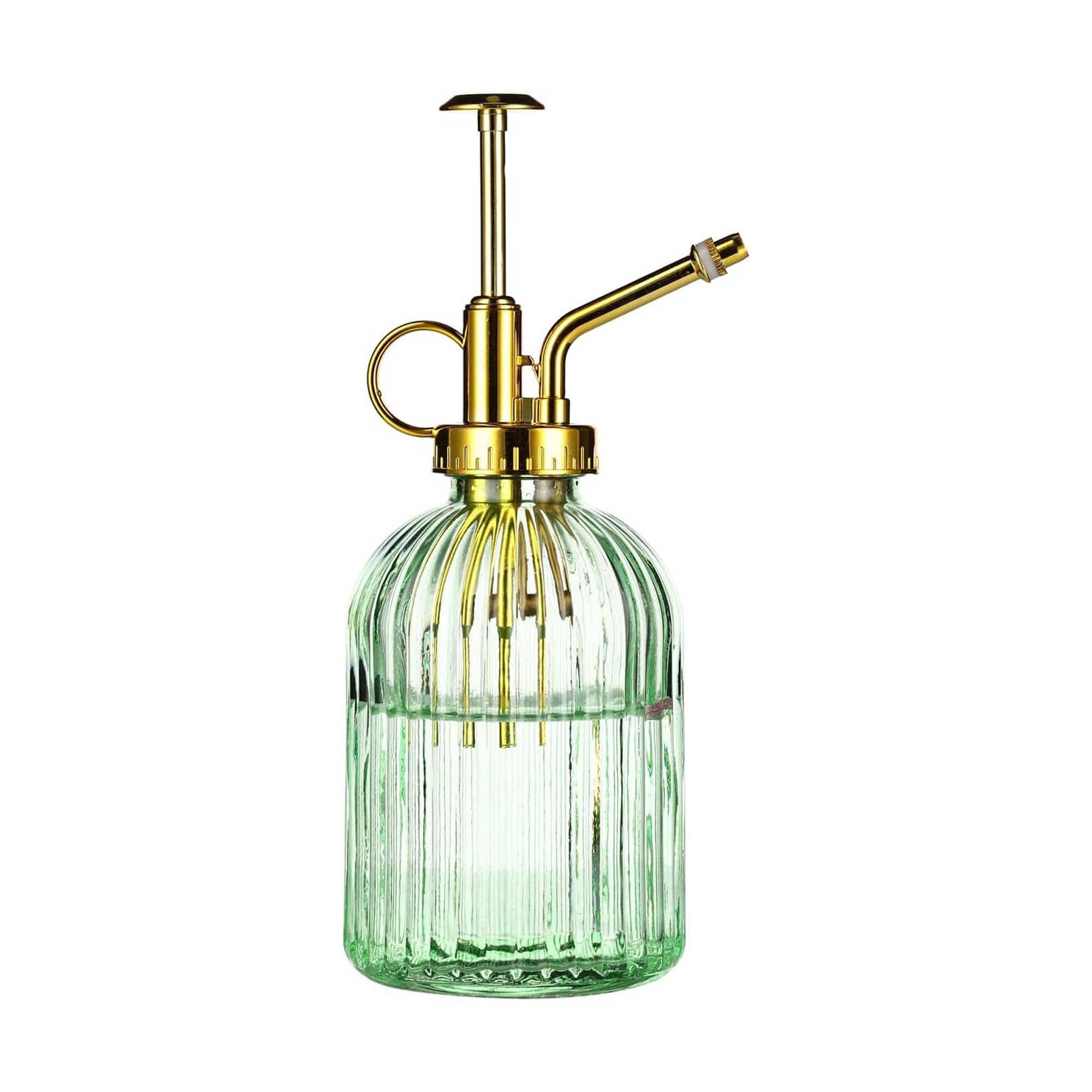
Price: $7.75
We love the timeless design of this glass mister bottle. It's a must-have tool for upping humidity levels around tropical indoor plants.
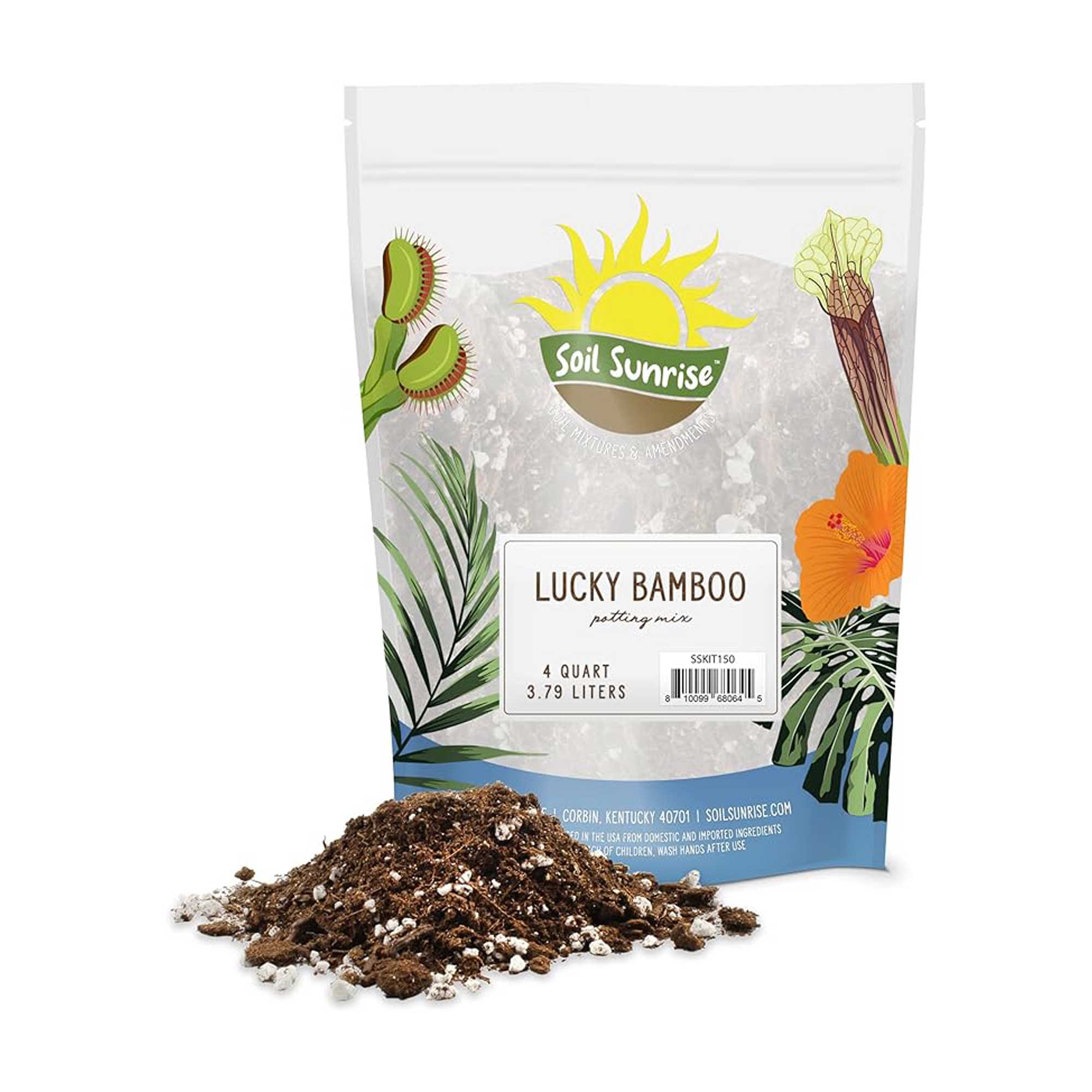
Price: $10.99
This well-draining and nutrient-retaining potting mix contains peat moss, perlite, worm castings, and lime – an ideal combination for a lucky bamboo.

Price: $10.99
In a ready-to-spray formula, this insecticidal soap can be used to treat a variety of pests, including thrips and spider mites, both indoors and out.
FAQs
Should you prune lucky bamboo?
Autumn says you can keep these plants tidy by removing any yellow or dead leaves.
You can remove any offshoots if they get too tall for the space, too.
Kayla adds, "You can also cut back the main stalk to encourage branching. When cutting the stalk, make a clean cut above a node (the raised ring on the stalk)." Note that cutting the main stalks in this way will prevent them from growing upward.
These best-selling Fiskars pruners from Amazon are ideal for neatening up your lucky bamboo and can be used to prune other indoor plants, too. Always remember to clean your pruners before you cut your plants.
Should you repot a lucky bamboo plant?
If your lucky bamboo is planted in soil, you may wish to move it to a larger container every two years or so. Otherwise, the roots can become congested, making it more difficult for the plant to get the nutrients it needs to thrive.
Repot it in a slightly larger pot, in spring, using fresh potting soil. Don’t be alarmed by the orange roots — this is normal!
Now you know how to care for lucky bamboo, you'll find it's a super easy houseplant.
If you're looking for another low-maintenance option, the jade plant, which has thick and glossy leaves, makes an excellent choice. Propagating a jade plant is easy, too, meaning you can get new plants for free.
Join our newsletter
Get small space home decor ideas, celeb inspiration, DIY tips and more, straight to your inbox!

The garden was always a big part of Holly's life growing up, as was the surrounding New Forest, UK, where she lived. Her appreciation for the great outdoors has only grown since then; over the years, she's been an allotment keeper, a professional gardener, and a botanical illustrator. Having worked for Gardeningetc.com for two years, Holly now regularly writes about plants and outdoor living for Homes & Gardens. In her spare time, Holly loves visiting local English gardens and is particularly fond of relaxed cottage-garden schemes. She also loves prairie-style planting – the tapestry effect of grasses mixed with drought-tolerant blooms never ceases to delight her. Always happiest around plants, when she isn't swooning over gardens, she's looking after her ever-growing collection of houseplants and arranging seasonal flowers in her apartment to paint.
-
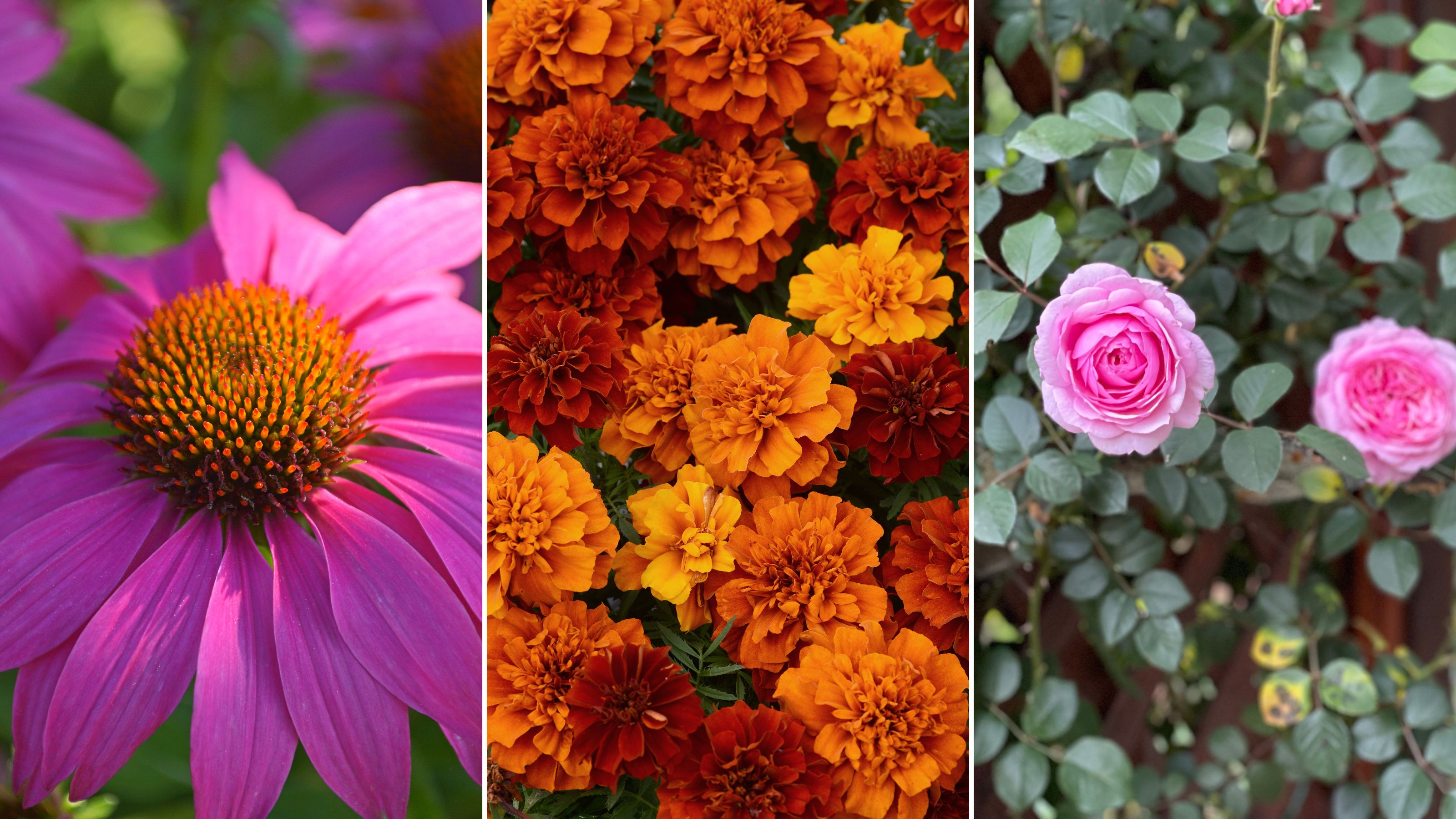 The 7 flowers to plant in August, according to gardening gurus
The 7 flowers to plant in August, according to gardening gurusKnowing what flowers to plant in August isn't always so clear-cut. But that's why we called in help from pro planters — here's what they said to pot.
By Becks Shepherd Published
-
 The 7 plants to prune in August — and the 2 pieces of greenery you shouldn't touch
The 7 plants to prune in August — and the 2 pieces of greenery you shouldn't touchWondering what plants to prune in August? We asked a gardening expert for their top tips plus info on what pieces of greenery to avoid pruning this month
By Becks Shepherd Published
-
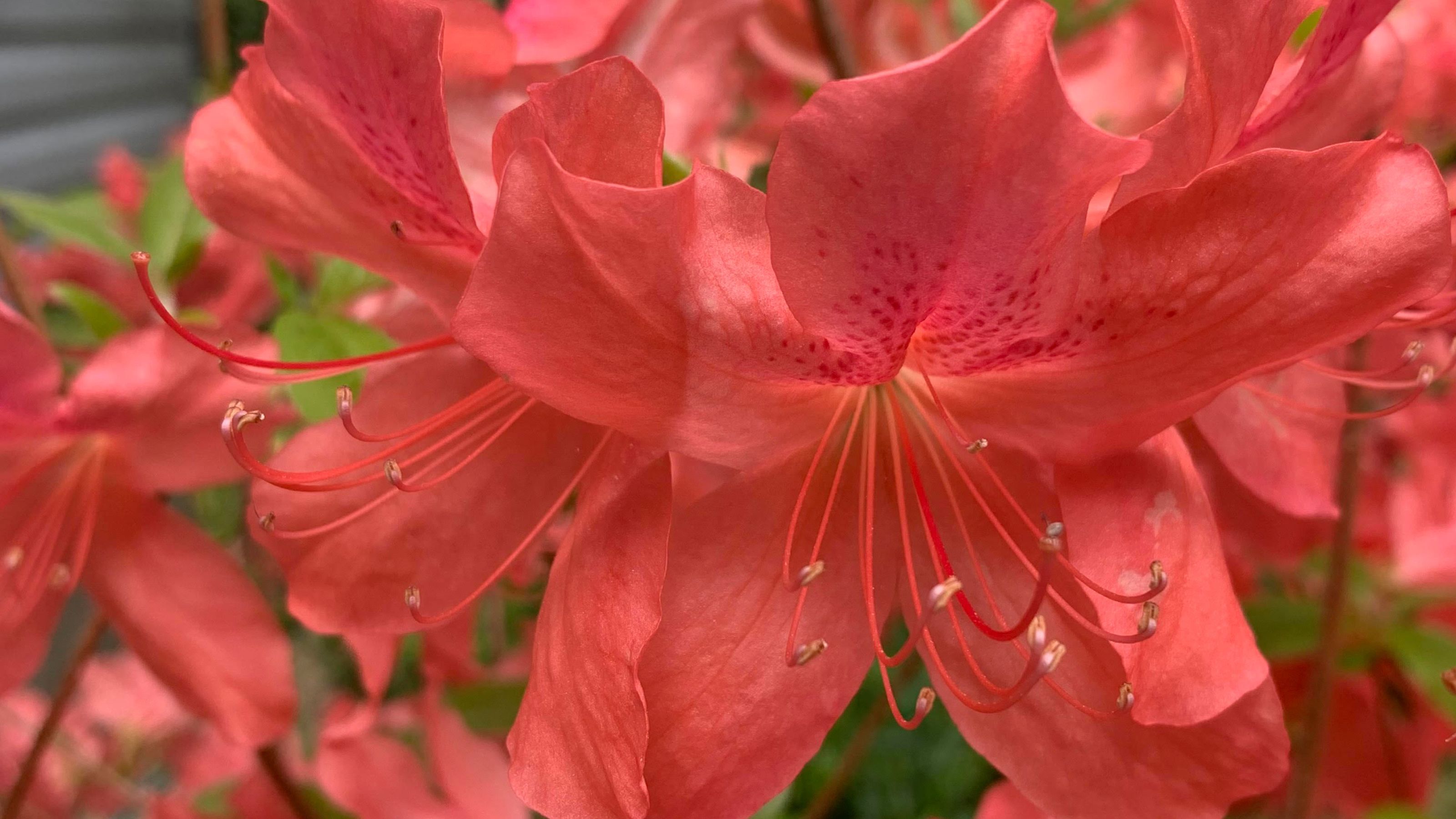 Do you need to deadhead azaleas? Top tips for pruning these flowering shrubs
Do you need to deadhead azaleas? Top tips for pruning these flowering shrubsWondering whether you need to deadhead azaleas? We asked a gardening expert for their top tips for looking after these blooms
By Becks Shepherd Published
-
 10 houseplants that are not toxic to cats — plus expert advice on keeping your pets safe
10 houseplants that are not toxic to cats — plus expert advice on keeping your pets safeKeep your four-legged companion safe by choosing these houseplants that are not toxic to cats, and learning the dangers of those that are, according to veterinary experts
By Holly Crossley Published
-
 Which houseplants are toxic to dogs? Vet experts pinpoint problem plants and solutions
Which houseplants are toxic to dogs? Vet experts pinpoint problem plants and solutionsWondering Which houseplants are toxic to dogs? We spoke to vets about the problematic leafy greens, what they trigger in dogs, and how to find a solution
By Danielle Valente Published
-
 How to attract hummingbirds to your backyard, according to ornithologists
How to attract hummingbirds to your backyard, according to ornithologistsTrying to figure out How to attract hummingbirds to your backyard? These ornithologist-backed tips will guarantee you visitors in no time
By Danielle Valente Published
-
 How to make indoor plant leaves shiny, according to green-thumbed experts
How to make indoor plant leaves shiny, according to green-thumbed expertsLearning how to make indoor plant leaves shiny seems trivial, but this is not just about aesthetics. Here's how to clean them properly, and why you need to do it, according to pros
By Danielle Valente Published
-
 Does hydrangea bloom every year? Pros spill the dirt on the "garden favorite" and when to expect it
Does hydrangea bloom every year? Pros spill the dirt on the "garden favorite" and when to expect itWondering, "Does hydrangea bloom every year"? We asked the pros all about the garden favorite and how often to expect them — here's the dirt.
By Danielle Valente Published